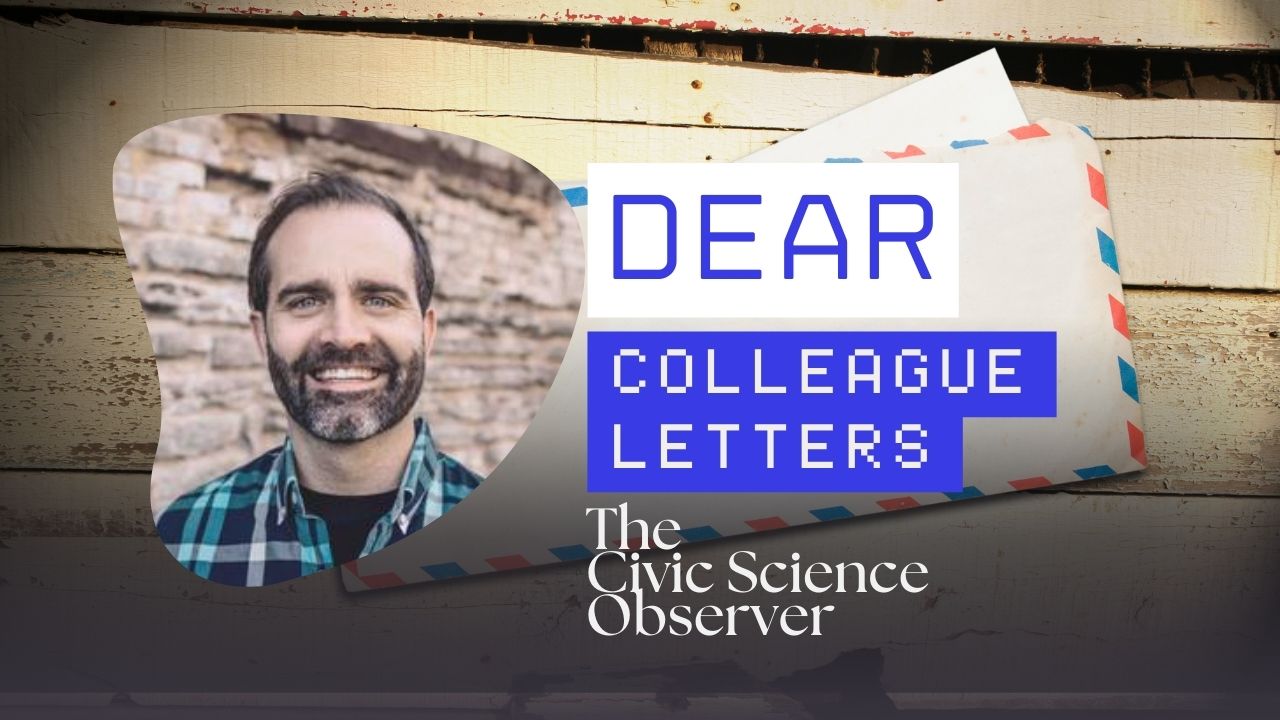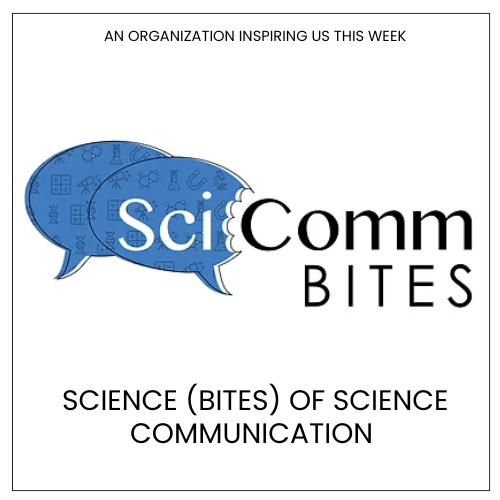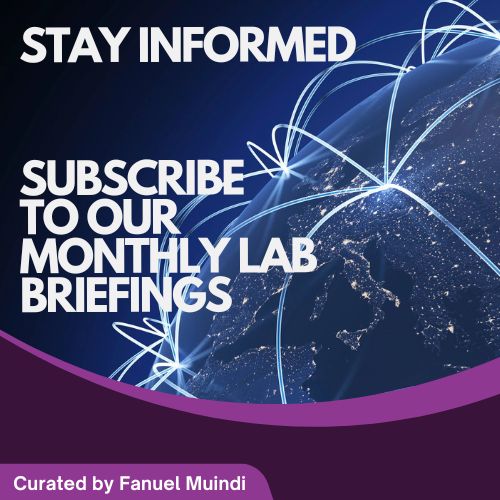Civic Science Observer
Dear Colleagues: Now is the time to scale up public engagement with science
Matt Wilkins: I address this letter to scientists, but it is an invitation for fans and defenders of science everywhere to unite and take action!

Dear Colleagues,
The status quo is forcing—not fixing—the public’s growing disengagement with science. Yes, we have watched helplessly as programs, grant panels, and the basic functioning of the US research apparatus have been upended in a matter of days. Yet these events are, in large part, a catastrophic symptom of a much more pervasive problem – a profound lack of public understanding about how federal research dollars improve, enrich, and save American lives.
This disconnect far predates the current mass layoffs and disassembly of US scientific institutions, and represents a glaring failure of our current ability to mobilize the knowledge we generate to engage, inform, and influence our fellow Americans.
We know with certainty that the US and the international community must dramatically cut carbon emissions, and swiftly transform our transportation, energy, agricultural, and packaging systems—huge sectors of our economy—to be sustainable and keep this planet livable.
Achieving these swift changes will require an informed citizenry that fundamentally understands how science works and makes evidence-based decisions in their own lives and at the ballot-box. Yet US student science performance on international PISA tests has been remarkably flat; overall science literacy has changed little over the last three decades; and public trust in scientists has fallen 14% since 2020.
Many complex issues are at play here, including how religion, political alignment, and echo chambers influence public views on science. Frustratingly, we have little control over these factors. As such, I am compelled to highlight 3 shortcomings in our current approach to science communication and outreach that are within our control: 1) focus, 2) connectivity, and 3) participation.
1. Focus. As a community, I believe we have focused too much on informal outreach (podcasts, museum days, and social media) and content that participants must actively seek out. In a recent paper in Frontiers in Communication, my co-authors and I highlight that while informal science outreach is incredibly valuable to welcome and nurture critical thinking, it fails to reach folks who don’t feel science is “for them.” In contrast, the formal K-12 classroom is the one place where all members of society (including science-disengaged students) go to learn about the world and how they fit into it. Yet the science community has little influence there.
Our lack of infrastructure for connecting K-12 classrooms to living scientists and the messiness of the scientific process hamstrings our ability to disseminate new findings, convey authentic scientific practices, and provide diverse role models to the public at scale. Scientists who recognize the importance of formal K-12 classrooms are saddled with independently building projects and recruiting participants, on top of their myriad academic obligations. And while there are numerous opportunities for scientists to hone their public speaking (The Story Collider, TEDx, Alan Alda Center) and communication skills (AAAS fellowships in Mass Media and Policy, BU’s SciCommers Program), scant resources exist for training scientists to navigate the US education system.
The now-defunct NSF GK-12 program once provided fellowships to grad students to partner with local school teachers, benefiting ~600,000 students. Now, the only such program I am aware of is Vanderbilt’s Collaborative for STEM Education and Outreach, where I was fortunate to spend 3.5 years working at a Nashville public middle school developing curriculum with teachers 5 days a week.
This position gave me a crash course in the challenges of connecting K-12 science lessons to current, authentic research, and particularly, the lack of infrastructure for doing so. Because of that experience, I founded Galactic Polymath, an education studio that helps scientists translate their work into free, high-quality, standards-aligned lessons for middle and high school. But even after publishing these resources, it is staggeringly difficult to connect with teachers and classrooms.
2. Connectivity. Scientists’ desire to grow science engagement, while well-intentioned, has become a disconnected landscape of insular channels promoting narrow topics to relatively small audiences (I include myself in this, despite my best efforts). Indeed, on several occasions, I have connected leaders of similar STEM outreach efforts who were unaware of each other—even groups on the same campus.
To amplify our impact and help members of the public find our resources, we must identify allies in our outreach space, collaborate, and co-promote. We must also recognize that digital marketing and audience development are complex, ever-changing fields in which most scientists have no training. For this reason, it makes sense to expand capacity in these areas at the university level and to leverage the specialized skills of our colleagues who left academia specifically to bring research to the public. These include education-related efforts (e.g., BiteScis, Data Classroom, and Galactic Polymath); filmmakers (Days Edge, STEMedia, Sykom, Phuture Doctors); brand consulting (Impact Media Lab); and more.
3. Participation. To move the needle, we need all our fellow scientists to recognize: communicating with the public is part of my job. I argue that much more effort should be put into K-12 formal classroom outreach. But regardless of the medium, each scientist does not need to be the communicator. Many researchers are talented writers, speakers, and filmmakers who are already excited to engage with the public.
For the rest of us, communicating to the public and other stakeholders can be delegated by actively working with press offices, journalists, companies like those listed above, and by supporting students’ interests in outreach and science communication. We must push back when our colleagues refer to outreach as a distraction or imply that it’s a waste of time. Because if we don’t make our case to the public, bad actors may misrepresent our research or demonize our colleagues, instead.
Make no mistake: we are under siege, and by staying in our lane and comfort zones, we have allowed anti-intellectual efforts to expand across the country. How many of you have discussed the following with your colleagues: a Tennessee law from 2012 that undermines teachers’ confidence in teaching evolution and climate change or the multiple times the Heartland Institute mailed climate change denial materials to thousands of science teachers? The erosion of public trust in one area of science can easily spread to others, yet these stories are often shrugged off and forgotten. My friends, if it is not our job to defend science, whose is it?
I address this letter to scientists, but it is an invitation for fans and defenders of science everywhere to unite and take action! Earth is in crisis, and navigating complex global challenges requires action from a science-engaged populace. So I beg you to consider: What more could I do to support public science engagement?
It should be something specific, something that is personally motivating, and something you could sustain for the next 5 years. Search for potential collaborators who are already doing the work. And start today. Get creative—shrug off the doom and dread to help build the scientific society we need in this pivotal moment. This work will not be easy, but it has never been more important. Let’s go!
Dear Colleague Letters on The Civic Science Observer (CSO) are guest essays that offer authors a platform to share new initiatives and reflections drawn from published data, personal expertise, and experience with fellow colleagues on important issues within the civic science landscape. Please note that the opinions expressed in these letters are those of the authors and do not necessarily reflect the views of the Civic Science Media Lab and/or its partners. If you are interested in sharing your perspective, please email us at mlab@civicsciencemedia.org.
Dr. Matt Wilkins is the Founder and CEO of Galactic Polymath LLC, an education studio that turns current research into high-quality, open-access lessons for grades 5–12. Originally from Huntsville, Alabama, he now lives in Minneapolis, Minnesota. His diverse background includes receiving his PhD from the University of Colorado at Boulder, a postdoc at Vanderbilt, building houses with AmeriCorps, conducting biological research in seven countries, and teaching at all levels from elementary school to graduate education.

-
Civic Science Observer3 weeks ago
What are the objectives of the Neurotech Justice Accelerator at Mass General Brigham?
-
Civic Science Observer2 months ago
Ecosystem building in action: Science Talk 2025 and the dynamic civic science conference landscape
-
Civic Science Observer2 months ago
Weekend Watch: At Boston College, the McMullen Museum of Art presents “Wonders of Creation: Art, Science, and Innovation in the Islamic World”
-
Civic Science Observer2 months ago
Associate Professor Nathaniel Frissell shares insights on using ham radio to study space weather



















